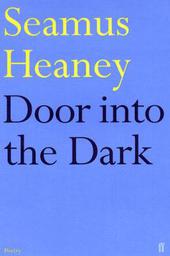
|
Door into the Dark
Paperback / softback
Main Details
| Title |
Door into the Dark
|
| Authors and Contributors |
By (author) Seamus Heaney
|
| Physical Properties |
| Format:Paperback / softback | | Pages:56 | | Dimensions(mm): Height 200,Width 130 |
|
| Category/Genre | Poetry by individual poets |
|---|
| ISBN/Barcode |
9780571101269
|
| Classifications | Dewey:821.914 |
|---|
| Audience | |
|---|
| Edition |
Main
|
|
Publishing Details |
| Publisher |
Faber & Faber
|
| Imprint |
Faber & Faber
|
| Publication Date |
7 October 2002 |
| Publication Country |
United Kingdom
|
Description
Originally published in 1969, Seamus Heaney's Door into the Dark continues a furrow so startlingly opened in his first collection, Death of a Naturalist (1966). With the sensuosness and physicality of language that would become the hallmark of his early writing, these poems graphically depict the author's rural upbringing, from the local forge to the banks of Lough Neagh, concluding in the preserving waters of the bogland and a look ahead to his next book, Wintering Out (1972).
Author Biography
Seamus Heaney was born in 1939 in County Derry in Northern Ireland. He grew up in the country, on a farm, in touch with a traditional rural way of life, which he wrote about in his first book Death of a Naturalist (1966). He attended the local school and in 1951 went as a boarder to St Columb's College, about 40 miles away in Derry (the poem 'Singing School' in North refers to this period of his life). In 1956 he went on a scholarship to Queen's University, Belfast and graduated with a first class degree in English Language and Literature in 1961. After a year as a post-graduate at a college of education, and a year teaching in a secondary modern school in Ballymurphy, he was appointed to the staff of St Joseph's College of Education. In 1966 Seamus Heaney took up a lecturing post in the English Department of Queen's University, and remained there until 1972, spending the academic year 1970-71 as a visiting Professor at the University of California in Berkeley.
Reviews"Heaney has the gift of finding a new and consummate phrase to evoke physical qualities, and when these take on symbolic resonance the result is superb. . . . [This] collection as a whole is a splendid achievement."--Richard Kell, "The Guardian"
|